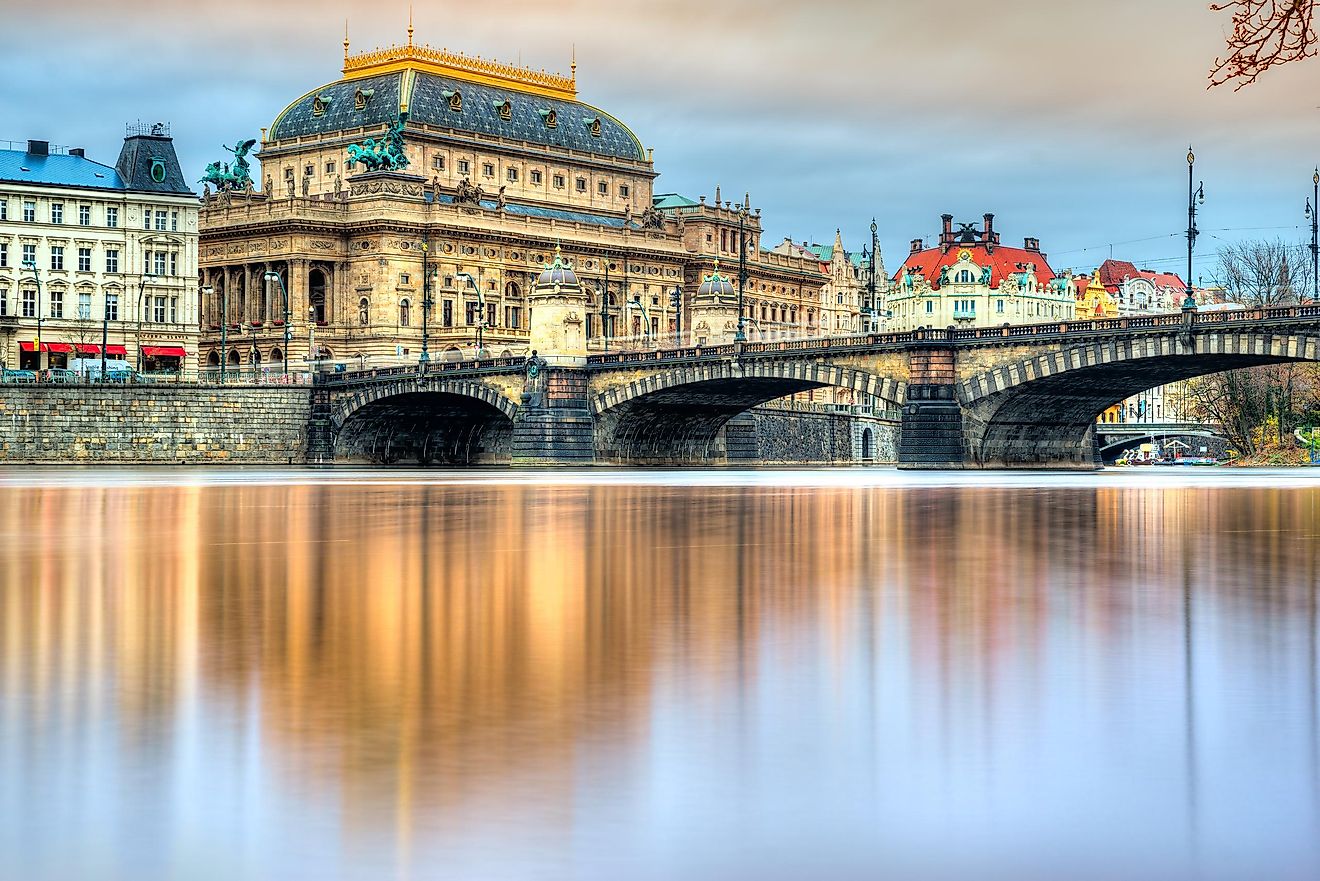Prague National Theater - Unique Places around the World

5. Description
In a city which boasts an inexhaustible treasure trove of magnificent buildings, Prague’s National Theatre is uniquely impressive enough to stand out from the rest. Located at the end of Narodni, or National, Street, it faces the extensive panorama of Prague Castle across the River Vltava. The National Theatre is a structure both weighty with presence and radiant with an imposing elegance which defies the passage of time.
4. Tourism
Like The Municipal House in which the birth certificate of Czechoslovakia was signed in 1918, the National Theatre is of vital importance to the country as one of the embodiments of Czech statehood. Planned and built in the second half of the Nineteenth Century as an ideological symbol of Czech culture, as well as its newfound statehood, it remains a vital platform for, and developer of, theatre, ballet, and opera alike. Located in central Prague, the capital city of the Czech Republic, it is easily accessible for anybody touring this region of Europe.
3. Uniqueness
The theater is a thing of beauty and fascination in itself, not just to the exterior eye of the beholder, but to those within as well. Whether taking it in as a member of the audience at a performance or on one of the regular guided tours, it is always sure to please even the most judicious eyes. Broadly Neo-Renaissance in style, the National Theater was designed by Czech architects Josef Zítek and Josef Schulz between the late 1860s and early 1880s. It’s the lush application of sculptural work on the exterior of the building, such as the trigas, teams of three rearing horses on the corner pylons, the allegorical figures designed by Bohuslav Schnirch, and the golden roof embellishments so responsive to sunlight, which give the building its sense of magic and vitality.
2. History
Zitek, Schulz and Schnirch were just three of the architects and artists known as the ‘National Theatre Generation’ who contributed to the glory of the Theatre, and became influential on the emerging Czech art scene in the later half of the 19th Century. The theatre curtain is undoubtedly the most impressive item of the theatre’s interior décor. The original was destroyed in the fire which gutted the whole building when finishing touches were being applied in August of 1881. Today’s curtain was in turn designed by Vojtěch Hynais in 1883, and serves as a depiction of the patriotic ideal firing the construction of the building, the motto ‘ Národ Sobě’, meaning ‘the nation to itself.’ It was this same national spirit which, kindled by the destructiveness of the fire, rallied around the need for the theatre’s immediate reconstruction. In the rebuilding process, people from all classes worked to come up with enough money in just six weeks for the theater's successful rebuilding, and subsequent 1883 reopening.
1. Threats
The National Theatre recently underwent extensive cleaning and restoration of its exterior, though not at the expense of city authorities or the Czech government, but at that of the Skoda Car Company. While being restored, the whole side of the building facing the river and the traffic on the Legion Bridge was covered in a giant image of a Skoda vehicle. This caused some outrage amongst Prague citizens who saw it as a slight to the theatre’s dignity, but with little government money available for restoration it was inevitable that private money would be needed to fulfill the financial needs. This highlights what is perhaps the only real threat to the preservation of such an important national cultural monument, that being the risk of official indifference.







